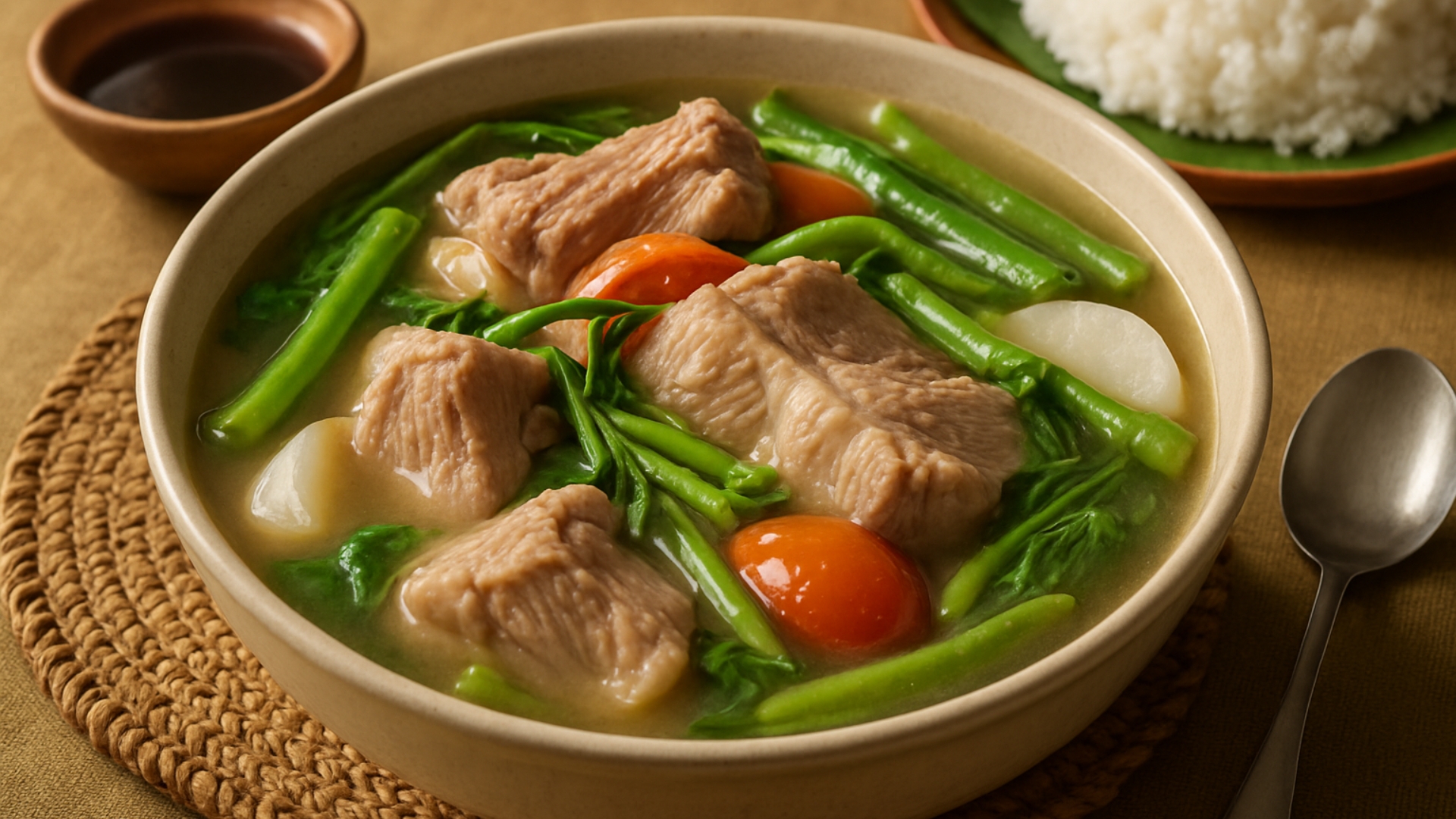
If Adobo is the bold, dependable classic of Filipino cuisine, Sinigang is its moody, emotional sibling. It’s the soup that makes you pause, pucker, and then melt into your seat. It doesn’t just warm your belly. It hits your soul with that perfect asim.
Tamarind may get all the credit, but Sinigang is so much more than sour broth. It’s rainy day therapy. It’s your lola’s magic remedy. It’s the dish that turns quiet lunches into slurping contests.
So where did it come from, and why do we love it even when it makes our eyes water?
A Taste of the Past
Sinigang is one of the oldest and most traditional dishes in the Philippines. Unlike Adobo, which has a Spanish-given name, Sinigang is purely native. The word comes from the verb sigang, which means “to stew” or “to boil.” No colonizer rebranding here. This one’s all ours.
It’s believed that early Filipinos developed Sinigang by using local souring agents to flavor soups and preserve ingredients. Over time, the dish evolved into a staple, thanks to the country’s love for tamarind, kamias, green mango, and anything that could make your mouth go “woooh.”
Where It Came From
Like most Filipino dishes, Sinigang doesn’t belong to just one place. It’s a national favorite.
You’ll find it bubbling in pots across Luzon, Visayas, and Mindanao. Every region has its own take, and every household has its own ratio of sour to savory. Some like it mild. Others want it so sour it feels like a breakup.
What’s in a Bowl of Sinigang?
At its core, Sinigang is a stew made with:
- Meat or seafood (pork, shrimp, fish, beef, or even chicken)
- A souring agent (usually tamarind)
- Water
- Vegetables like kangkong, labanos, sitaw, talong, and tomatoes
- Fish sauce, salt, or patis for that umami kick
And that’s just the foundation. From there, the magic happens.
Sinigang Variations Across the Country
1. Sinigang na Baboy (Pork Sinigang)
The most beloved version. Made with pork belly, ribs, or neck bones. Rich, fatty, and perfectly balanced by the sour broth. This one dominates Filipino lunch tables.
2. Sinigang na Hipon (Shrimp Sinigang)
A lighter, sweeter take thanks to the shrimp. Often made quick and fresh. The kind of dish that makes you want to lick the shells clean.
3. Sinigang na Isda (Fish Sinigang)
Usually made with bangus or maya-maya. It’s comforting and delicate. Perfect for days when you want something light but still full of flavor.
4. Sinigang na Baka (Beef Sinigang)
Uses beef shanks or short ribs. Hearty, bold, and perfect with lots of rice. Best served when the weather is gloomy and your mood matches.
5. Sinigang sa Bayabas (Guava Sinigang)
This one swaps tamarind for guava, creating a slightly sweet and creamy flavor. It’s softer, more mellow, and wildly underrated.
6. Sinigang sa Miso (Sinigang with Miso)
Tamarind meets Japanese miso paste. The result? A tangy, salty, umami bomb that’s perfect for fish lovers. It’s a modern twist that tastes like it’s been around forever.
What Makes It So Good?
The asim is addictive, the hot broth feels like a warm hug, the soft veggies and tender meat soak up every flavor, and that sip of sour-salty soup after a big spoon of rice? Pure joy.
Sinigang is the kind of dish that doesn’t need a special occasion. It makes everyday meals feel special all on its own.
Fun Facts You Might Not Know
- Tamarind isn’t the only souring agent. Filipinos also use calamansi, kamias, green mango, batuan, and even lemon.
- Some people mix Sinigang with Adobo. It’s chaotic. It’s controversial. It’s called Adobong Sinigang and honestly, it slaps.
- In 2021, Taste Atlas ranked Sinigang as the world’s best-rated vegetable soup. We clapped. Loudly.
What’s Your Sinigang?
Whether it’s pork, shrimp, beef, or fish, every version of Sinigang tells a story. It’s the kind of dish that brings people together, even when it makes their eyes twitch from the sourness. It’s loud, proud, and comforting. Just like the people who cook it.
So the next time you hear someone slurping at the table and wiping their nose from the heat and the asim, you’ll know. That’s Sinigang.
